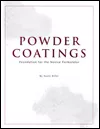The Ink Story: Looking to Turn the Page
Ink manufacturers and their customers - particularly those in the publishing segment - are more than ready to turn the page, shake off the effects of economic malaise, and move on to a brighter chapter in their collective fortunes.
Unfortunately, however, assessments of the industry's current health and near-term prognosis appear to suggest that ink sales volumes aren't likely to recover dramatically in the near term. Barring a major surge in economic growth as a whole - and a subsequent expansion in print advertising and other key end-use markets - ink makers are giving the outlook a realistic reading. The prevailing view is that growth may return late this year, but that the industry should expect a gradual opening of the spigot - not a gusher.
"I think we'll be lucky if an economic turnaround occurs in 2002," says Kathy Marx, vice president of Planning and Strategic Marketing at Flint Ink Co., one of the top U.S.-based ink producers. Marx said she now views forecasts of a return to growth by the fourth quarter as "optimistic," due to the uneven course that the current economic recovery appears to be following.

A Difficult Year in 2001
Gives Way to Slow Rebound
Industry estimates and informal assessments draw a gloomy picture of the ink industry's fortunes in 2001. Whereas government figures indicate that coatings-industry shipments declined by less than 2% last year from 2000 while managing a modest gain in dollar terms, estimates by the National Association of Printing Ink Manufacturers (NAPIM) suggest that ink sales plummeted 8.5% in volume and 5.8% in dollar value in 2001. Of the major ink segments, only water-based flexographic packaging ink managed to record growth in total pounds, at 4.7%, NAPIM estimates in its "2002 State of the Industry Report." The report, which bases its estimates on a survey of manufacturers, was reviewed at NAPIM's recent annual convention.The NAPIM survey found that 45% of the responding companies experienced reduced sales from 2000, with 33% saying sales rose. The survey found "cautious optimism" for this year, with expectations that sales will at least hold their own.
Since 1990, NAPIM estimates that the industry's compound annual growth rate was 2.9% in volume and 2.8% in value, with steady growth seen until 2000. The association estimates that the total U.S. ink market was about $4.2 billion in 2001, including digital and non-impact ink. Volume declines were seen in the lithographic and gravure segments, while the flexographic segment held steady in 2000 and 2001.
NAPIM says the publication and commercial sector showed contraction of 7.5% in dollar value and 10.4% in volume in 2001 from the year before.
In the packaging segment, flexo waterborne ink showed a 4.7% gain in volume, while a .5% drop in dollar value is attributed to a shift in product mix or price erosion. Lithographic sheetfed ink has "steadily lost ground in packaging over the last several years," and was down 3.4% in value and 2.6% in volume in 2001, the report says.
Flexible-packaging ink continued to outpace other industry segments, posting an estimated 2% gain in 2001 following recent annual growth rates of 5% a year. A flexible-packaging industry forecast anticipates growth of up to 3.5% in 2002.
NAPIM says some debate exists over the size of the emerging digital printing ink market, with sales estimates varying. The association notes that one industry forecast anticipates that 10% to 20% of print production in the United States could employ some type of digital process within the next 10 years. Based on that estimate, digital ink sales could rise to anywhere from $600 million to $1.2 billion annually within that time span. One industry consultant is said to forecast growth of up to 18% a year.
Assessing the digital market's growth curve, NAPIM says digital presses are "continuing to proliferate," with at least 14 suppliers making presses for the commercial printing and packaging industries, including web presses. But the association notes that some equipment suppliers are also selling proprietary toners and inkjet inks, cutting into what might otherwise constitute a growth market for traditional ink makers. Radiation-cure systems are also seen as a key growth segment for the ink industry.
The NAPIM survey cites "competition" and "volume" as the top current concerns of ink manufacturers. The worry about competition stems from the challenge posed by lower-cost imported ink and raw materials.
At Flint Ink, an Ann Arbor, MI-based ink company that has expanded rapidly as a result of an aggressive acquisition strategy in recent years, business was off last year by anywhere from 5-15%, depending on the market segment.
"Overall, 2001 was a very tough year for both the printing and ink businesses," Marx says. "We were hoping for a 'soft landing' for the economy by year's end, but that didn't happen. The events of Sept. 11 didn't help." Marx and other key Flint Ink executives recently teamed up to offer an analysis of industry and company sales and market trends. Among their conclusions:
Purshouse said "significant overcapacity" exists in the European market, causing keen competition for market share and consequent downward pressure on selling prices. "Rationalization will continue until there is a leaner, fitter and more international competitive ink-producing sector," he said.
Henry Leong, general manager of Flint Ink Asia, said the slowdown in Taiwan "significantly affected" the company's fortunes in Asia because Flint's biggest customer in Asia, the Liberty Times, is located there.
Flint executives estimate that Taiwan's newspaper sector was down 25%-30% in 2001 from 2000, while the sector was off 20% in Hong Kong.
In China, meanwhile, the industry's results in 2001 reflected GDP growth of 7.4%. Economic growth of 6.5-7% is forecast for the next three years. The printing industry has expanded by about 10% in China in the last three years and is forecast to grow at 10-12% for the next five years, and Leong said Flint is "increasing our focus on the growing China market."
Assessing the outlook for 2002, the company sees "more of the same," although an upturn in the fourth quarter is viewed as a possibility. An exception may be Asia-Pacific, where Damian Johnson said "an upturn is already occurring. It should be evident by September (2002)."
In China, where Leong says sales gains never really paused, the printing industry is poised for rapid sales gains. Additional impetus will come from China's recent entry into the World Trade Organization and preparations for the 2002 Olympic Games in Beijing, Leong says.
Packaging Ink Segment
Less Affected by Downturn
The downturn in most major economies left its mark on various ink segments, with declines seen in commercial, news and publication markets. Packaging has managed to show growth, but no segments can be called "strong," H. Howard Flint II, Flint Ink chairman and CEO, said in the company review of industry and company performance.The relatively strong pace of packaging-ink sales reflect relatively stable or even growing consumer spending. Publishing, by contrast, has been hit particularly hard by advertising cutbacks, with newspapers and magazines experiencing advertising declines even while circulations rose.
Like other ink makers, Flint Ink is looking to expand its digital-ink business, where the company offers water- and solventborne and UV inks. At the beginning of this year, the company saw a doubling of its Digital Division's sales as being within the realm of the possible. The business remains relatively small, perhaps accounting for up to 8% of total sales.
In response to the economic situation, Flint said it has adjusted costs and capacity to bring operations into line with anticipated volumes.
"Cost cutting is imperative, and with the continued economic slowdown, small firms teetering on the edge of financial viability are going to be acquired or closed," Marx says. "The segments most affected are those that are most closely linked with the economy and advertising expenditures: publication, news and commercial segments."
The company also has focused on continuous improvement in production efficiencies and sought to exert pressure on suppliers for lower raw-material costs.
Technology Outlook: Digital, Radiation-Cure Seen as Growth Areas
The digital printing and radiation-cure markets are viewed as strong growth segments for ink. Digital printing "has taken a major share of the wide-format poster market," and other segments are expected to boost their use of digital processes, says Graham Battersby, Flint Ink vice president, Research & Development. He says the challenging economic situation is exerting greater pressure on R&D to roll out "new high-performance inks, low-cost technology and new manufacturing techniques.""Computer to press" technologies are being developed, but widespread use of digital processes in industrial printing continues to be seen as a long-term endeavor.
Marx says Flint Ink has high hopes for what the company calls its "Single Fluid Ink" technology, a developmental system that is said to address the ink-water balance problem in the lithographic printing processes. Among other benefits, the technology would reduce start-up waste in print runs, Marx says. Commercialization of the technology, which Marx calls "revolutionary," is envisioned in the near future.
Globalization: A Factor to be Reckoned with
Flint Ink, which along with Sun Chemical Corp. has led a consolidation trend in the ink industry with a flurry of more than 20 acquisitions in the last five years, says it remains on the lookout for "good strategic opportunities" that can help it build market share, while acknowledging that the economic slowdown has made companies more cautious about deals. Marx said she expects consolidation to continue, adding that "now may be the best time to buy." Meanwhile, the company has focused on rationalization of its operations in the wake of previous acquisitions.Meanwhile, the strength of the U.S. dollar puts U.S. ink makers at a stiff competitive disadvantage and places additional downward pressure on pricing, Marx says. To meet the challenges, Marx says U.S.-based ink producers should communicate to their customers that:
Price competition is particularly intense in Asia, say Johnson and Leong, with ink suppliers from Japan and Europe benefiting from the strength of the U.S. dollar. In response, Flint is supplying more products from plants in Europe and Australia/New Zealand.
Says Leong: "Asia has always been an extremely competitive market, and every major ink producer in the world is hungry for market share."
Looking for a reprint of this article?
From high-res PDFs to custom plaques, order your copy today!







